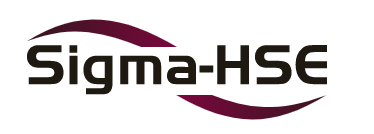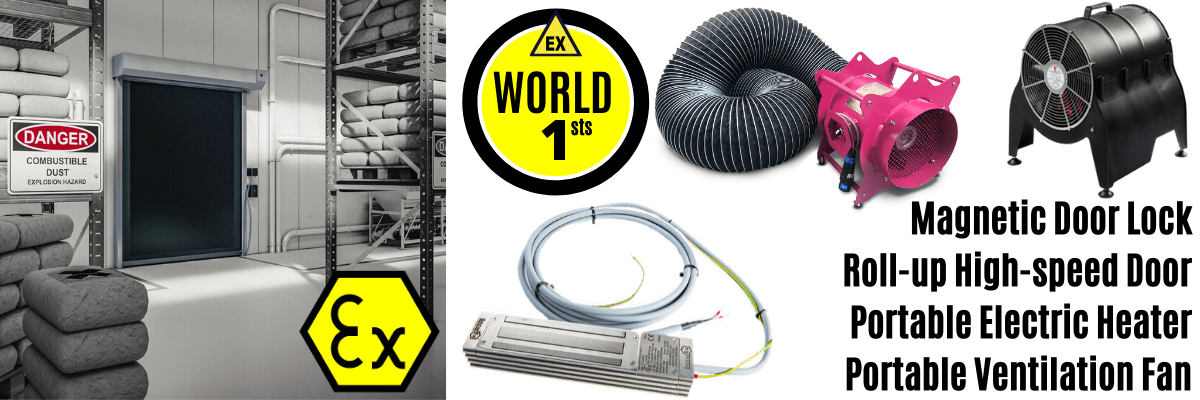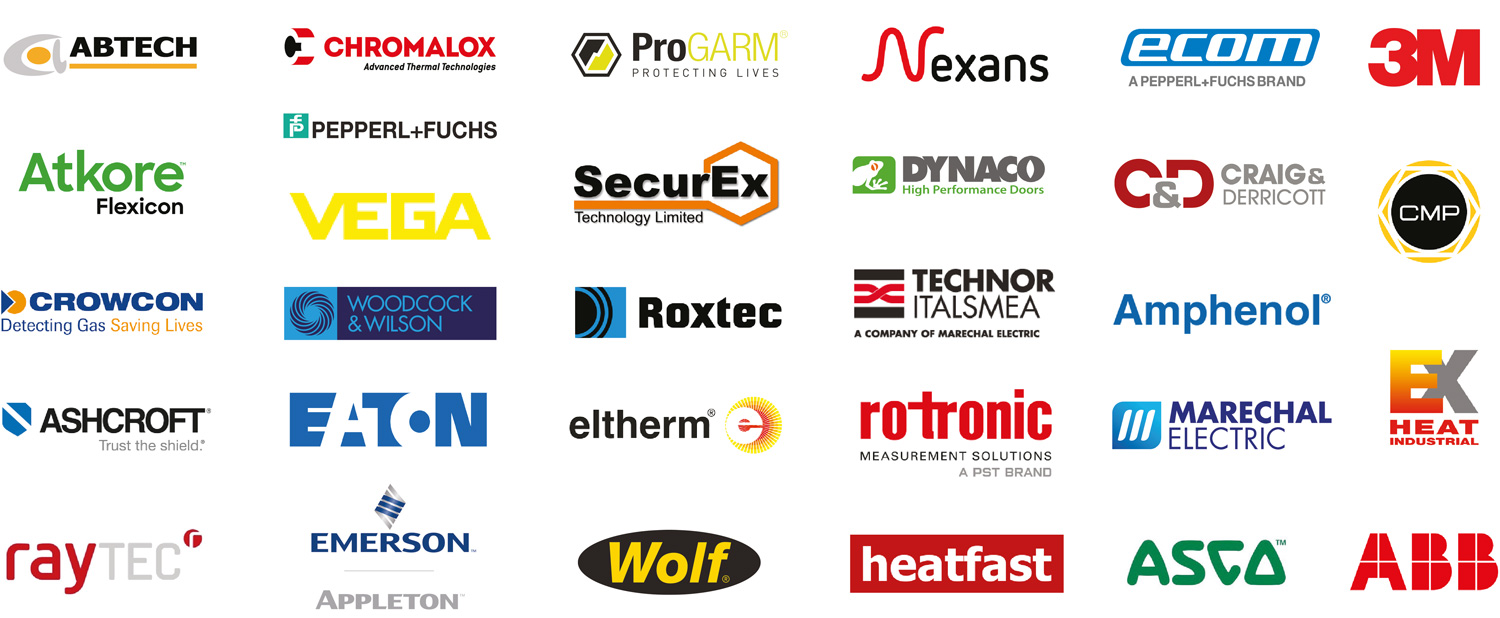What Are Pmax & Kst? A Quick Guide To Dust Explosion Data
Published 27 Apr 2022

A Quick Guide To Dust Explosion Data
Dust Explosion Data
Guest Article by Sigma HSE
Combustible dusts have the potential to present serious hazards across many process industries, in the form of flash fires or explosions. Many industries handle combustible dusts as their main product and still more generate combustible dusts as a by-product of a manufacturing process that uses combustible materials. Organisations must be aware of the dangers posed by dust (explosions).
Dust explosions occur because of a release of fine dust particles into the air (oxygen), which are then ignited by a source of ignition (hot surface, flame, or spark etc.). Dust explosions are a hazard in industrial and commercial settings where the presence of a flammable atmosphere and an effective source of ignition are present. Combustible dust and powders may include wood, agricultural products, metals, spices and pharmaceutical API’s and excipients.
➡ Thorne & Derrick, Experts in Equipment for Explosive Atmospheres, specify, design and supply safe products to guarantee Light, Heat, Power & Ventilation in potentially combustible dust atmospheres.
It is recommended that dust or powders be professionally tested before system designs are finalised or when looking to change aspects of a process. As potentially combustible dust and powders can gather in areas of a process where they may not be easily detected or easily accessible, organisations must take preventative action to maintain safety in the workplace. Proper housekeeping, risk assessments and ensuring that correct equipment and effective safety precautions are in place to prevent dust explosions are just a few examples of a thorough process safety strategy.
There are multiple parameters that can be used to characterise dust and powder combustibility. Kst and Pmax are two important measurements for characterising explosion severity, and an understanding of these measurements and their relationship with combustible dust safety will aid in the creation and maintenance of holistic process safety mitigation strategies.
What is combustible dust and what are dust explosions?
Before looking into Pmax and Kst as dust explosion characteristic values, we must first seek to understand what dust explosions are.
Dust in the work environment can be created when materials are:
- Transported
- Handled
- Processed
- Polished
- Ground
- Shaped
- Abrasive blasted
- Cut
- Crushed
- Mixed
- Sifted
- Screened (dry materials)
Many workplaces are at risk of generating or using a combustible dust.
Do you work with industrial processes or manufacturing applications where there is a risk of explosion due to the presence of combustible dusts?
If so, you should be aware of the legal requirement to use correctly certified Hazardous Area Electrical & Lighting Equipment which is appropriate for use in these potentially explosive dust atmospheres and environments.
Flash fires occur when a dust is lofted into a cloud and ignited. Dust explosions occur when combustible dust particles are lofted into a cloud and ignited in an enclosed space. When these particles are mixed with oxygen (air), combustible particles, and placed in contact with a source of ignition, rapid combustion occurs
A source of ignition can be described as an object, process or event that has the capability to ignite or transmit combustion. A few examples of sources of ignition could be a result of flame and hot surfaces, spontaneous ignition, friction, or electrostatic discharge.
Developing preventive safety measures to eliminate hazards associated with combustible dust starts with identifying combustible dust in the workplace. Although the technical definitions for combustible dust vary from country to country, having a basic understanding of what could be a combustible dust will help. We have listed a few descriptions below, but if you are unsure if your materials could be classified as a combustible dust, please get in contact.
- The Occupational Safety and Health Administration (OSHA) in the United States defines combustible dust as ‘a solid material composed of distinct particles or pieces, regardless of size, shape, or chemical composition, which presents a fire or deflagration hazard when suspended in air or some other oxidizing medium over a range of concentrations.’
- The National Fire Protection Agency (NFPA) (also in the United States) defines combustible dust as ‘a finely divided combustible particulate solid that presents a flash-fire hazard or explosion hazard when suspended in air or the process-specific oxidizing medium over a range of concentrations.’ This can be found in Standard 652-2019, The Fundamentals of Combustible Dust.
- The Health and Safety Executive (HSE) in the United Kingdom state that “Quite generally, the advice applies to anything which can burn, and which exists in a fine powdered form, unless tests show that particular hazards are not present.”
Although most dusts/powders that may form as a cloud in the air which have the potential to explode, not all materials will do so. Controlling the hazard presented in handling combustible dusts requires a thorough understanding and data on the physical properties of each material, so it is recommended that all materials be professionally tested.
What is Pmax?
Pmax (a brief overview) – Maximum pressure, the greatest amount of pressure and maximum amount of damage that your dust can cause in an confined space.
Dust and powder particles transfer heat to adjoining particles creating a chain reaction during the combustion phase. Following this, and during the primary stages of an explosion, the heat and gasses produced by combustion can lead to an increase in pressure.
Pmax, therefore, provides data into the maximum achievable pressure that can be generated during a dust explosion. If a dust explosion begins in a closed vessel which is strong enough to contain the combustion phase, then the dust cloud will continue to burn until there is not enough fuel or air left.
Pmax is measured by dispersing a material in a 20-Litre spherical testing chamber whilst initiating ignition using a strong ignition source, such as a chemical ignitor. Data created via the 20-Litre demonstrates what the maximum explosion pressure would be under optimum concentration. The test is conducted by increasing the concentration of dust inside the closed chamber and measuring the pressure of the explosion until a maximum is reached.
A crucial factor to understand is that the Pmax measurement is usually independent of vessel sizes. So, when testing materials in a 20-Litre testing vessel, the same pressure will usually occur in similar real-world environment. The results of this test can be used to design deflagration containment, venting and suppression systems.
Maximum rate of pressure rise
(dP/dt) max – Maximum rate of pressure rise, before an explosion runs out of oxygen and fuel
The maximum rate of explosion pressure rise seeks to understand the result of combustion acceleration of the pressure inside a vessel and the rapid increase after an explosion has occurred. As the rate of pressure rise reduces after an explosion runs out of oxygen or fuel, the maximum rate of pressure rise analyses the point just before the explosion reduces. When looking at the test data via a graph, the maximum rate of pressure is the point at which an increasing gradient is at its highest.
The measured dP/dtmax is a function of the vessel size used in testing.
What is Kst?
Kst (a brief overview) = (dP/dt)max x V1/3 is a dust constant, therefore normalising maximum rate of pressure rise in a 1m cubic vessel. Kst is characteristic of the material not the test vessel size.
Although maximum explosion pressure can be independent of vessel size, the rate of explosion pressure is not. Therefore, the larger the volume of a vessel, the lower the maximum rate of pressure rise will be. Within Kst, there are specific categories from which powders can be grouped:
Kst Classes:
St0 0 bar.m.s-1 – Does not explode
St1 1 to 200 bar.m.s-1 – Weak explosion
St2 201 to 300 bar.m.s-1 – Strong explosion
St3 > 300 bar.m.s-1 – Very strong explosion
These categorised groups easily signal the level of explosion severity. A material that has zero risk will (therefore) be grouped as (Kst = 0) and will therefore be an St 0 dust. All other materials will therefore have an explosion hazard attached. Even though a higher Kst value demonstrates that a dust has a more ‘active’ danger than those associated with having a lower Kst, ‘Kst value strength’ should not be overlooked. In fact, many well-known dust explosions can be directly attributed to St 1 class dust groups.
An St 1 dust will generate enough power to cause a flash fire or explosion, which may result in the creation of a sequence of further damage to people, workplace, and the environment. Businesses must be aware of and should develop effective dust hazard mitigation strategies to prevent such accidents from occurring. This can be accomplished by testing dusts and powders to determine ‘Pmax’ and ‘Kst’ values to allow characterisation of the hazard risk of materials being handled.
If the Kst of dusts or powders is tested in a 20-Litre sphere laboratory test chamber, it would be possible to work out what the maximum rate of pressure rise would be for a process.
The Dust explosion severity test
All three of these parameters are generated form he explosion severity test. This test is conducted to determine the maximum pressure (Pmax), maximum rate of pressure rise (dP/dt)max and the dust constant Kst value of an ignited powder, dispersed in the air, as a dust cloud.
Working through a range of powder concentrations, a powder is dispersed into a 20L explosion vessel (sphere) using dry compressed air. These suspended dust clouds are then exposed to a large 10 kJ chemical ignition source and the following explosion monitored, measured, and recorded, using high accuracy piezoelectric transducers. Testing is conducted over a wide range of powder concentrations which enables flammability curves of Pmax, dP/dt & Kst to be generated, alongside peak values.
Data generated by the explosion severity test is predominantly used for either the design of explosion protection systems (venting, containment, or suppression) or to confirm if a material is appropriate for processes within an established explosion protection system.
At Sigma-HSE, we can complete the explosion severity test to the following standards: BS EN 14034 parts 1 & 2 / ASTM E1226. You can download our schedule of accreditation here.
How to use Kst and Pmax data
Organisations across multiple industries have their combustible dust and powders tested to ensure regulatory compliance and to guarantee that the equipment in their processes can be installed and/or modified to ensure safety and business continuity.
Effective Kst and Pmax testing data will support the creation of dust explosion hazard mitigation strategies. As risk levels can vary between processes, ongoing attentiveness, and effective management of change strategies are required to identify conditions in your plant that might cause a potential safety problem. Therefore, it is essential to ensure that your testing strategy and maintenance plans are consistently reviewed and kept up to date.
The impact of Kst and Pmax data
Kst and Pmax are powder characteristic data rather than ‘vessel-related’ data. Any facility or place of work that generates or handles dust should seek to test their materials and ensure that they have been categorised correctly. Data from explosivity testing should be used to aid in the design of or for upgrading existing dust collection systems, dust control processes or general processes that may involve dust.
In many countries, there are regulatory compliance laws for businesses that handle dust in their processes. Any UK site that manages a significant quantity of flammable gas, vapour, or combustible dusts or powders that have the potential to form an explosive atmosphere will fall under the Dangerous Substances and Explosive Atmospheres Regulations (DSEAR). In the US, owners or operators of facilities that handle combustible dusts, are required to comply with NFPA 652, Standard on the Fundamentals of Combustible Dust, and other industry-specific standards.
In order to develop effective mitigation strategies to prevent such dust hazard accidents or near misses from occurring, it is imperative to characterize materials that are handled in the process. Testing your dust to determine the Kst & Pmax values will validate the design of protection systems including proper housekeeping, spark detection, explosion venting, explosion suppression and explosion containment.
Dust Explosion Conclusion
Protecting your people, workplaces, business, and the environment depends on the awareness and maintenance of combustible dust and powder hazards across entire processes. A thorough understanding of how to manage or eliminate these dangers and avoid catastrophe is therefore required.
Sigma-HSE’s combustible dust and powder testing lab offer comprehensive standard and custom dust & powder testing packages to aid you in identifying these hazardous materials and their related risks.
Sigma-HSE are recognised experts in the fields of explosion severity testing. Our team of engineers and technical experts are on hand to discuss your requirements and will collaborate with you to provide actionable Pmax and Kst safety solutions that are both cost and time effective. Sigma-HSE’s accredited testing laboratory can undertake all required testing, according to the relevant standards with a quick turnaround service.
If you are unsure about any potential combustible dusts and how to mitigate related hazards at your facility, please get in touch with Sigma-HSE, as their team of global engineers and technical experts can work with you to provide actionable solutions to protect people, workplace, environment and your business.
ABOUT SIGMA-HSE (UK) LTD

Sigma-HSE was formed in 2012 in Winchester, UK. Our vision is to provide a single source of expert knowledge regarding process safety in the work environment. Our broad range of consultancy services include, ATEX/DSEAR Assessments, HAZID/HAZOP Studies, SIL/LOPA Assessments. We have the expertise to facilitate COMAH needs and to meet Process Safety Management requirements.
Sigma-HSE is a fast-growing organisation in the fields of health & safety and the environment, with bases in Europe, Asia and the Middle East, and have associated partnership in USA.

EXPERTS IN EQUIPMENT FOR EXPLOSIVE ATMOSPHERES
leaders in ATEX Innovation To The Hazardous Area Industries
Thorne & Derrick are leaders in the development and distribution of Product Innovations that deliver significant improvements to clients plant, people and operational safety in the explosive atmosphere industries.
Your proactive problem solvers experienced in succession planning for the replacement of obsolete, non-conformant and legacy equipment in hazardous areas.
Your first-choice provider of innovative and competitive solutions to ensure ATEX & IECEx Compliance for Hazardous Area Electrical, HVAC & Process Instrumentation Equipment to UK and international projects.
Control Panels | Plugs | Isolators | Enclosures & Junction Boxes | Lighting | Control Stations | Motor Starters | Heat Trace | Gas Detection | Flame Detection | Process Instrumentation | Process Heating | Ventilation Fans | Security Access Control

Competitive Prices | Extensive Stocks | Technical Support | Express Delivery


